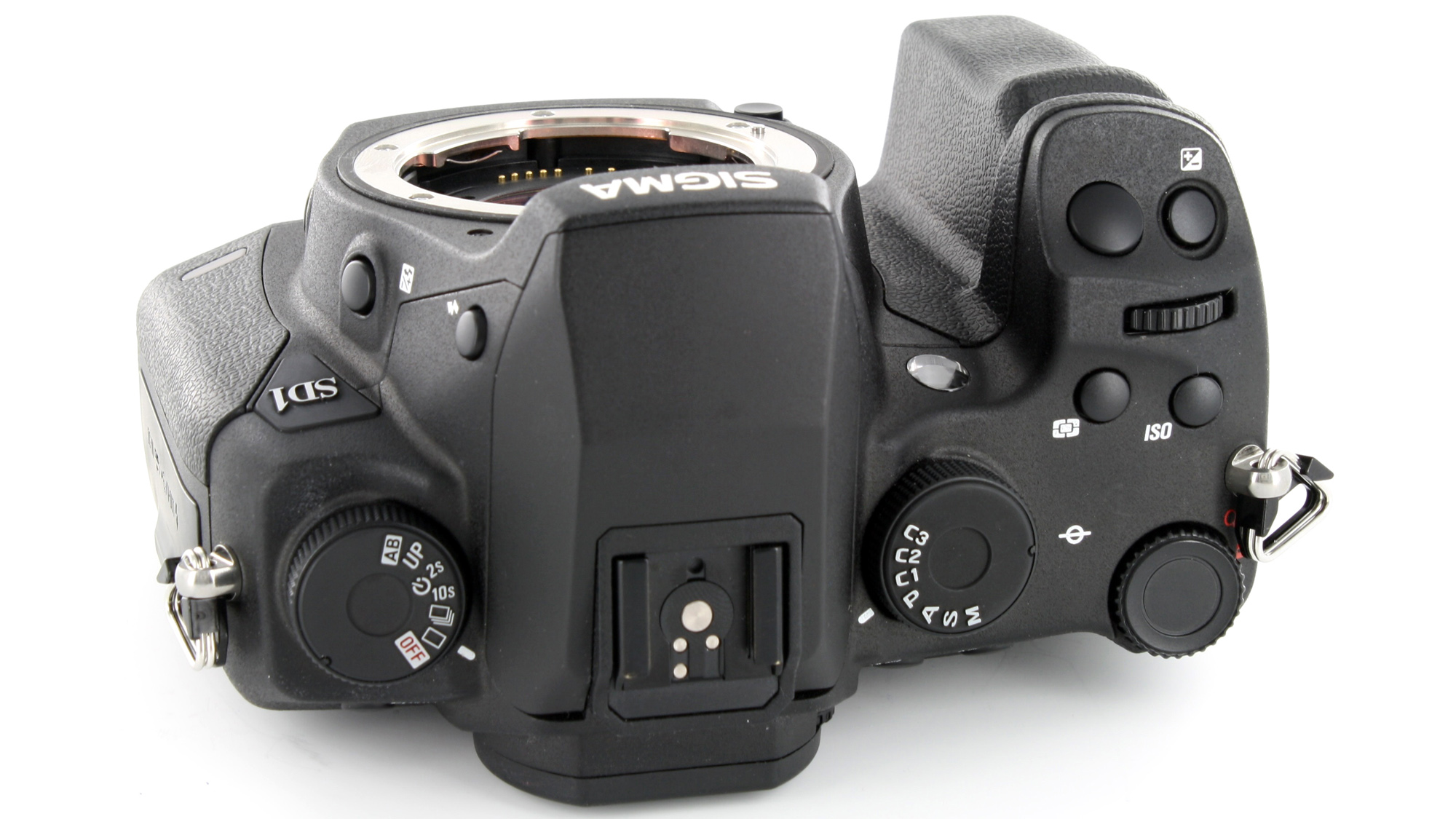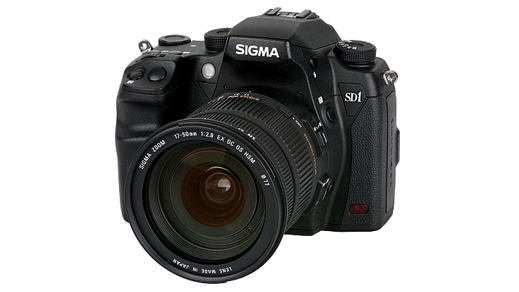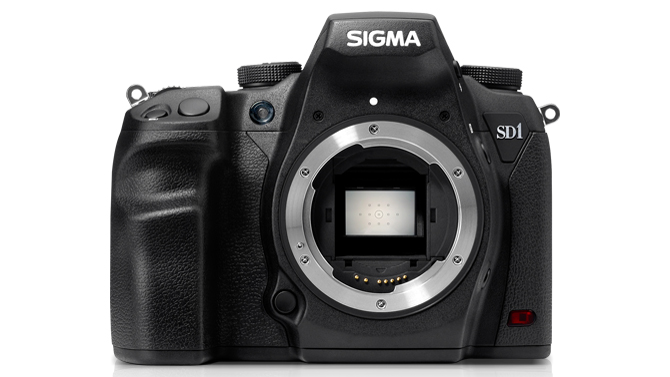Why you can trust TechRadar
The Sigma SD1 Merrill camera body itself is robust, and tips the scales at a not-too-heavy 700g. There's little in the way of indulgent flourishes; more function over form, the Sigma SD1 Merrill's utilitarian design does, however, feature some notable points of difference.
Take the grip, for instance, which includes a notch where a finger naturally comes to rest below the shutter button. Holding the Sigma SD1 for long periods is therefore a comfortable experience, despite the boxy feel.
The Exposure Compensation button is placed next to the shutter release button on the top lip of the grip, so this can be activated without taking your eye away from the viewfinder. In theory it's a simple case of rolling your index finger from one to the other, but because the Exposure Compensation button is inset to prevent accidental operation, it can be slightly fiddly to operate.
Two chunky dials either side of the Sigma SD1 Merrill's pentaprism control the key camera settings. The 'D-dial' on the left houses the drive mode options, one of which must be selected in order to switch the camera on.

The main Mode Dial, on the right of the pentaprism as you hold the camera, serves up the slimline selection of P, A, S and M modes and three Custom modes. The Custom modes enable you to tailor the Sigma SD1 Merrill to different situations by recording specific set-ups for Exposure Mode, AF Drive, White Balance Flash Sync and other parameters.
Elsewhere, a generous range of buttons and dials pepper the Sigma SD1's body, providing quick access to the key controls. There's not much in the way of doubling up of button functions, either. So metering mode, ISO, Autofocus, AE Lock and AF point selection get their own standalone controls.
Two control dials are used in conjunction with the buttons. The 'A-dial' is seated vertically behind the shutter release, while the 'S-dial' is a horizontal wheel on the rear of the thumb grip. The letter prefix gives a clue to each dial's function in Manual mode, although their control over aperture and shutter speed can be swapped.
In the majority of other modes, they double up with the same function. This seems a wasted opportunity. Instead of both dials changing aperture in Aperture Priority mode, for example, why couldn't one of them be configured to provide direct control over exposure compensation?

In addition to the dedicated control buttons, the Sigma SD1 Merrill offers two menu-driven control interfaces. Press the FUNC button, and the Function menu overview is displayed on the rear screen. Similar to Canon's Quick Control Screen, this enables you to select a shooting parameter and change its current setting with the four-way control pad.
Too slow for you? Then try the Sigma SD1's Quick Set Menu. Pressing the QS button to the right of the rear panel activates the first menu, where you can adjust ISO, metering mode, AF mode and flash settings. These are replaced by White Balance, Image Size, Colour Mode and Image Quality with another tap of the QS button.
Each of these functions corresponds with an arrow on the four-way controller on the back of the camera, and this is used to change the parameters directly. For instance, ISO is at the top of the first Quick Set screen, and pressing the up arrow begins cycling through the ISO sensitivities.
It can provide a very speedy way to react to a shooting opportunity, although having to repeatedly press an arrow key to cycle through options may come to irritate over time.
By far the biggest irritation, though, is the Sigma SD1 Merrill's write times. During our tests it took an average of 16-17 seconds to process and write a file to memory card. Fill the camera's buffer with its maximum seven full-res frames during Continuous Shooting mode and it takes around one minute 30 seconds to write the images to the card.
Compounding the frustration is the fact that some of the Sigma SD1 Merrill's controls are unresponsive while the camera is clearing its buffer. Key shooting parameters such as aperture and shutter speed and exposure compensation are unaffected. But if you want to review the image or access the Function menu, you're out of luck. Chances are, you'll grow to hate the flickering red Busy lamp on the back of the camera.
